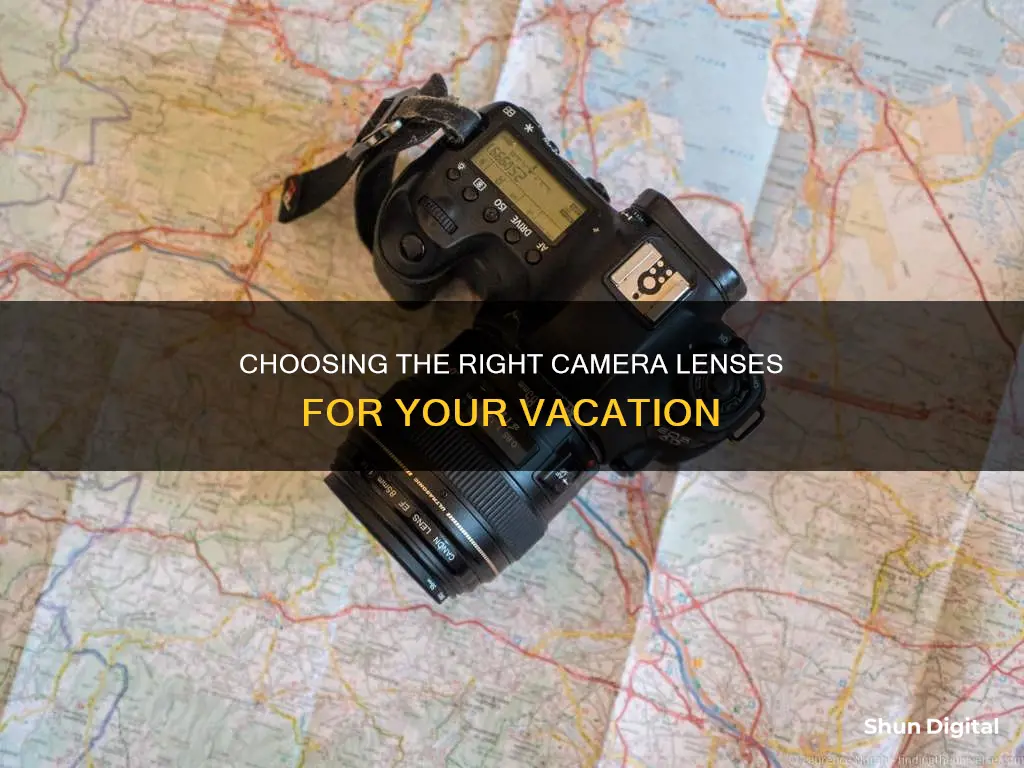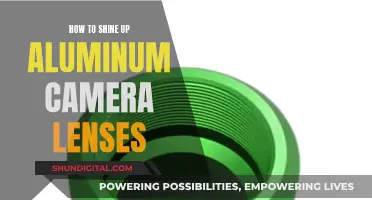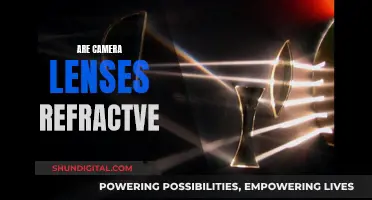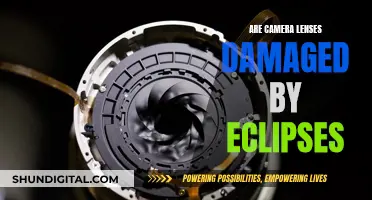
When it comes to choosing the right camera lens for your vacation, there are several factors to consider. Firstly, the type of photography you plan to do is important – will you be shooting landscapes, street photography, portraits, or a mix of everything? The lens you choose should align with your photographic interests and the type of images you want to capture.
Another key consideration is the weight and size of your gear. If you plan to walk a lot or hike, a lightweight and compact setup is ideal. You may also want to consider bringing multiple lenses to cover different focal lengths, but this adds weight and bulk to your kit. A good compromise could be a zoom lens, which offers a versatile range of focal lengths in one package.
- Wide-angle lenses (e.g. 16mm, 24mm, 35mm) are great for landscapes and street photography, offering a wide field of view and the ability to capture more of the scene.
- Standard lenses (e.g. 50mm) are versatile and work well for a range of situations, from portraits to street photography.
- Telephoto lenses (e.g. 70-200mm, 85mm) are ideal for capturing distant subjects, wildlife, and adding a layer of zoom for street and building photography.
- Prime lenses have a fixed focal length and are often praised for their sharpness, low-light performance, and simplicity. However, they may require more frequent lens changes.
- Zoom lenses offer convenience and flexibility, allowing you to quickly adjust your composition without physically moving.
Remember to also consider the weight of your camera body, the availability of charging options, and the durability of your gear when travelling. Lastly, don't forget to pack essential accessories like memory cards, batteries, and a sturdy camera bag to protect your equipment.
| Characteristics | Values |
|---|---|
| Purpose | Travel photography |
| Number of lenses | 1-3 |
| Types of lenses | Wide-angle, super-zoom, prime, telephoto |
| Accessories | Tripod, filters, cleaning tools, memory cards, card readers, cables, camera bag, rain protection |
| Weight | Lightweight |
| Size | Compact |
| Image stabilisation | Yes |
| Aperture | Minimum of f/16 to f/22 for landscapes; maximum of f/1.4 to f/2.8 for low light |
| Focal length | 24-70mm, 35mm, 50mm, 85mm |
What You'll Learn

Wide-angle lenses
Another benefit of wide-angle lenses is their ability to provide more depth of field. This is an essential aspect that every photographer utilizes. They also allow you to add foreground interest to landscape photos. Whenever you need everything in the frame to be in focus, a wide-angle lens will be your best friend.
Additionally, wide-angle lenses offer greater context for portraits. One of the most effective ways to accomplish a successful portrait is to include the subject's environment. A wide-angle lens lets you capture not just the subject but also what is around them.
When it comes to sports photography, wide-angle lenses are a great choice as they can capture the entire field or venue. They are also useful for wedding photography, as they can capture group shots and provide clear images regardless of the lighting conditions.
However, it's important to note that wide-angle lenses may not be suitable for bokeh effects due to their wide angle of view and long depth of field. They are also typically more expensive, especially if you want higher-quality glass. Additionally, they may not be ideal for night street photographers, as the equipment can be costly.
Some popular wide-angle lenses include:
- Fujifilm XF 10-24mm f/4 R OIS WR
- Sony FE PZ 16-35 mm f/4
- Canon RF 14-35mm f/4 L IS US
- Nikon Z 14-30mm f/4 S
How to Safely Remove and Clean Your Camera Lens
You may want to see also

Telephoto lenses
For beginners, a 55-250mm or 55-200mm lens with small relative apertures (f/4 to f/5.6, or more) is often used. If you are going to be shooting wildlife, a longer focal length (300mm minimum) is required. The Canon EF 70-300 f/4-5.6L IS USM is a great choice for its small size and long focal length.
If you are shooting with a Canon mirrorless camera, the Canon RF 24-240mm f/4-6.3 IS USM is a good superzoom option that isn't too heavy or expensive. For Nikon mirrorless cameras, the Nikon Z 24-200mm f/4-6.3 VR is a compact and lightweight option with a sturdy construction and weather seals.
For Sony full-frame mirrorless cameras, the FE 24-240mm f/3.5-6.3 OSS is a good choice. It has a powerful 24-240mm zoom range and includes Optical SteadyShot, but it lacks sharpness at the longest zoom setting.
If you are shooting with a Fujifilm camera, the Fujifilm 18-135mm f/3.5-5.6 WR LM R OIS is a good option. It has a fast and silent autofocus system, a 5-stop stabilizer, and is weather-resistant.
For L-mount cameras, the Panasonic Lumix S 28-200mm f/4-7.1 Macro O.I.S. is a compact and lightweight option that covers a range of commonly needed focal lengths. It also has a dual image stabilisation system, combining optical stabilisation with in-body stabilisation.
Understanding Camera Lenses: Describing the Basics
You may want to see also

Prime lenses
The Sigma 35mm F1.4 Art DG HSM lens is a popular choice for Canon, Nikon and Sony cameras. It is a fast lens, focusing quickly and tack sharp, even at f/1.4. The only downside is that it is not weather-sealed.
If you are looking for a more affordable option, the Yongnuo YN 35mm f/2 offers excellent value and is a lot newer than the Canon EF 35mm f/2.
For Nikon cameras, the AF-S NIKKOR 35mm f/1.8G is a good budget option. It is lightweight and very affordable.
For mirrorless cameras, the Canon RF 35mm f/1.8 is a good choice.
If you are shooting with a crop sensor, you should look for a lens in the 24mm range, as the 35mm will be too wide. For Nikon APS-C shooters, the AF-S NIKKOR 24mm f/1.8G ED is a good super-fast, super-sharp option.
If you are looking for a wider angle, the Sigma 24mm f/1.4 DG HSM Art is a popular choice. It is particularly wide and fast, offering versatility with wider shots and close-ups of subjects with a narrow depth of field.
For a more compact option, the Canon EF-S 24mm f/2.8 STM is an excellent lightweight pancake lens.
When choosing a prime lens for travel, it is important to consider the type of photography you want to do, the conditions you will be shooting in, and the weight and size of the lens.
The P30's Camera: Unlocking the Power of Multiple Lenses
You may want to see also

Zoom lenses
Focal Length
When choosing a zoom lens, consider the focal length range that will best suit your needs. For APS-C cameras, a zoom range of around 18-200mm is ideal, as it provides similar wide-angle coverage to a standard zoom while giving you a longer telephoto reach. This is equivalent to a range of 28-280mm in full-frame terms.
Weight and Size
If you plan to travel light, look for a zoom lens that is compact and lightweight. Smaller lenses will be easier to carry and will take up less space in your luggage. However, keep in mind that larger zoom lenses tend to offer a longer focal length range.
Image Stabilization
Image stabilization can be a useful feature, especially when shooting in low-light conditions or with slower shutter speeds. It helps to reduce camera shake and can result in sharper images. Some lenses have built-in optical image stabilization, while others may rely on in-camera stabilization.
Aperture
The aperture of your zoom lens will affect your ability to shoot in low-light conditions and create shallow depth of field. A wider aperture (e.g. f/2.8 or wider) will allow more light to enter the lens and create a shallower depth of field, resulting in a softer background blur.
Versatility
Consider the types of scenes and subjects you plan to photograph. A zoom lens with a wide focal length range can provide more versatility, allowing you to capture landscapes, portraits, and street photography without having to change lenses.
Budget
Examples of Zoom Lenses for Travel
- Canon RF 24-240mm f/4-6.3 IS USM: A superzoom lens for Canon EOS R-series mirrorless cameras, offering a 10x zoom range, fast autofocus, and a 5-stop image stabilizer.
- Nikon Z 24-200mm f/4-6.3 VR: A compact and lightweight full-frame zoom lens for Nikon Z mirrorless cameras, featuring a sturdy weather-sealed construction and excellent image quality.
- Sony FE 24-240mm f/3.5-6.3 OSS: A versatile full-frame zoom lens for Sony mirrorless cameras, offering a powerful 24-240mm zoom range, quick and quiet autofocus, and Optical SteadyShot image stabilization.
- Fujifilm 18-135mm f/3.5-5.6 WR LM R OIS: A weather-resistant zoom lens for Fujifilm X-mount APS-C mirrorless cameras, featuring a fast autofocus system, a 5-stop image stabilizer, and excellent optical performance.
- Panasonic Lumix S 28-200mm f/4-7.1 Macro O.I.S.: A compact and lightweight 7x superzoom lens for Lumix S5 cameras, offering a useful range of focal lengths, good image quality, and impressive Dual I.S.2 image stabilization.
- Panasonic Lumix G Vario 14-140mm f/3.5-5.6 II ASPH Power OIS: A super-small and lightweight zoom lens for Micro Four Thirds cameras, offering a 10x zoom range, fast autofocus, and a highly effective 4-stop optical image stabilizer.
These are just a few examples of zoom lenses that can be great options for travel photography, depending on your camera system and specific needs.
Universal Camera Lenses: A Myth or Reality?
You may want to see also

Macro lenses
If you want to dabble in macro photography, you don't necessarily need a dedicated macro lens. There are other ways to get close to your subject with a "standard" lens, such as using extension tubes or close-up lens filters. However, if you want to get into close-up photography, a dedicated macro lens is the best tool for the job.
Mounting 42mm Lenses: Adapting for X-Mount Cameras
You may want to see also
Frequently asked questions
The best lenses for travel photography are versatile and lightweight. The 24-70mm lens is a great all-around lens that can be used for landscape, street, fashion, and portrait photography. The 35mm lens is also a good option as it is versatile and can handle indoor lighting and night scenes well. The 50mm lens is another classic choice for travel photographers as it produces natural-looking images with minimal distortion. Lastly, the 85mm lens is excellent for portrait, building, and street-style photography as it adds depth and closeness to the details.
When choosing a travel lens, it is important to consider the aperture, depth of field, image stabilization, weight, and size. A minimum aperture of f/16 to f/22 is ideal for landscape photography as it provides a greater depth of field and sharper focus. Image stabilization is also important, especially when shooting with a telephoto lens or slow shutter speed. Additionally, it is crucial to choose a lens that is compact, sturdy, and moisture-resistant to withstand the demands of travel.
Recommended lens and camera combinations for travel photography include the Canon 5D Mark III with the Canon 24-70mm f/2.8 II lens, the Nikon Z Mirrorless Full-Frame with the Nikon NIKKOR Z 35mm f/1.8 S lens, and the Canon EOS M Mirrorless Full-Frame with the Canon RF 35mm f/1.8 lens. It is also suggested to bring a tripod and extra batteries or chargers when travelling.







